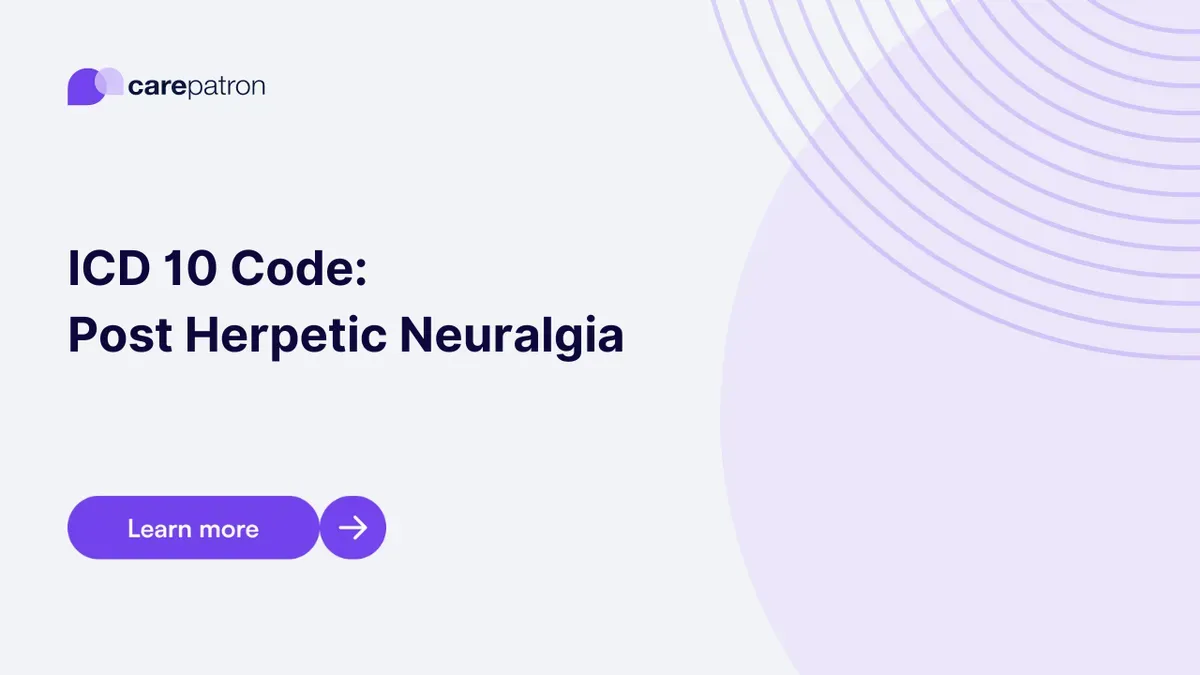
Post Herpetic Neuralgia ICD-10-CM Codes
Explore the key ICD-10 codes for diagnosing Postherpetic Neuralgia, a painful shingles complication. Learn about their clinical significance and usage.
Use Code
Commonly asked questions
An ICD code for postherpetic neuralgia should be used when documenting a confirmed condition diagnosis in a patient's medical record.
Treatments for postherpetic neuralgia include medications like topical creams, anticonvulsants, antidepressants, opioids, and even procedures like nerve blocks.
A diagnosis code for postherpetic neuralgia represents a confirmed medical diagnosis. It is used for documentation, billing, and statistical purposes.
EHR and practice management software
Get started for free
*No credit card required
Free
$0/usd
Unlimited clients
Telehealth
1GB of storage
Client portal text
Automated billing and online payments
